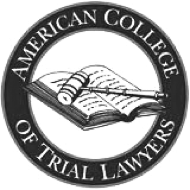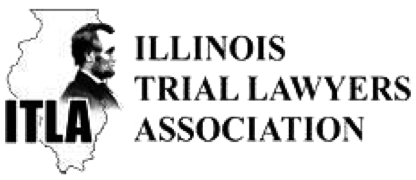Fiction can provide hours of entertainment, give us a momentary escape from reality, and encourage us to tap into our creative, youthful self. But there is a time and a place for such fanciful notions, and it is not in the legal arena. So why do tort reform supporters use extravagant, exaggerated, and sometimes even completely fabricated stories when discussing the legal system today? Bottom line: because those stories support their message.
Behind the Curtain of Tort Reform
Tort reform is backed by some pretty powerful players, such as insurance companies, manufacturers of dangerous or defective products or chemicals, and other major corporations, who use their funds to sway people in their direction. Driven by the desire to protect their assets and increase their bottom line, they want to make it nearly impossible for anyone they kill or injure along the way to receive compensation. To achieve those goals, they literally purchase the help of the keynote speakers—government officials, defense attorneys, the media, and other influencers.
Of course, before they can sell the idea that tort reform is actually good for our country, they must first build the belief that lawsuits are damaging the state of our country, or somehow frivolous in nature. They must convince unsuspecting Americans that seeking compensation for injuries is somehow wrong, or that individuals do not deserve the compensation they receive. Enter in the myths and misleading anecdotes perpetuated by both supporters and the unseen players.
Myths, Urban Legends, and Anecdotes
Like most anecdotes, the horror stories of the legal system are often fabricated or exaggerated. They are designed to make purported extraordinary occurrences “ordinary” problems within the legal justice system. But a deeper examination of these cases reveals them for what they really are: myths and urban legends designed to convince everyone our justice system is somehow broken. The following are just a few of the most commonly told stories—some of which you may have even heard of (and believed) yourself:
- The Stella Awards – Started back in 2001, the six outlandish “cases” dubbed the “Stella Awards” tell the tale of ridiculous lawsuit awards being given to people who created or were somehow responsible for their own injuries. Newspapers and columnists have referenced these six cases for years, and all in the name of tort reform. Yet these cases do not actually exist; they are nothing more than urban legends.
- The Bigbee Case – In the 1980s, Charles Bigbee (a man whose case has been repeatedly attacked, exaggerated, and distorted) was hit by a drunk driver while using a telephone booth and sustained serious injuries. Despite evidence that the very same phone booth (alleged to have a defective door and positioned too close to a six lane highway) had been struck by another car just twenty months before Bigbee’s accident, the case garnered a great deal of negative attention from the media, insurance executives, and even President Reagan. To this day, it is one of the most commonly exaggerated cases used to support tort reform.
- The McDonald’s Coffee Case – Although it is probably one of the most widely known lawsuits, few people know the real story behind the McDonald’s coffee case. Stella Liebeck, then 79, had been in the passenger seat of her grandson’s stationary car, holding her McDonald’s purchased coffee and trying to remove the lid. The coffee tipped over and scalded her body, resulting in third-degree burns over 16 percent of her body. She spent eight days in the hospital, underwent whirlpool treatments and skin grafting procedures, and suffered scarring and disability for more than two years. Originally, Liebeck offered to settle with McDonald’s, asking only for $20,000 to cover her medical expenses, but the company refused.When the case went to trial, the jury learned that more than 700 people had been burned by McDonald’s coffee, which was typically served at a higher than normal temperature. Furthermore, McDonald’s had known about the risk of serious burns from their coffee, failed to provide a warning to their customers, and could not provide an explanation as to why no plans to lower the temperature existed. Original punitive and compensatory damages sought were ultimately reduced, from $$2.7 million to $480,000 and $200,000 to $160,000, respectively, because the jury found the plaintiff to be 20 percent at fault. The parties ultimately settled for an undisclosed amount.
Do Not Let Tort Reform Supporters Deceive You, The Pursuit of Compensation for Your Injuries is a Legal Right
Tort reform supporters and financial backers are not just creating stories; they are changing the way each person thinks about their own injuries by shaming individuals for going up against large corporations. They are convincing Americans to vote for tort reform by telling them that it is an important step in fixing a “broken” judicial system. And they sell the lie that, without their votes, jobs and the economy are at risk.
The truth is that large corporations get away with negligence far too often. They create unsafe products and continue to distribute them, even when they know that people are being killed or injured. Because it costs less, and because human lives are weighed against their bottom line. This needs to end.
We stand up for the everyday victims of corporate negligence. Using our knowledge, resources, and fine-tuned investigative skills, we work hard to build cases that are capable of standing up against the strategies and ploys used by large corporations. Ask how we may be able to help with your case by scheduling a free initial consultation with our Chicago personal injury attorneys.
Source:
https://www.law.berkeley.edu/sugarman/Bigbee_42306_web_version.pdf






